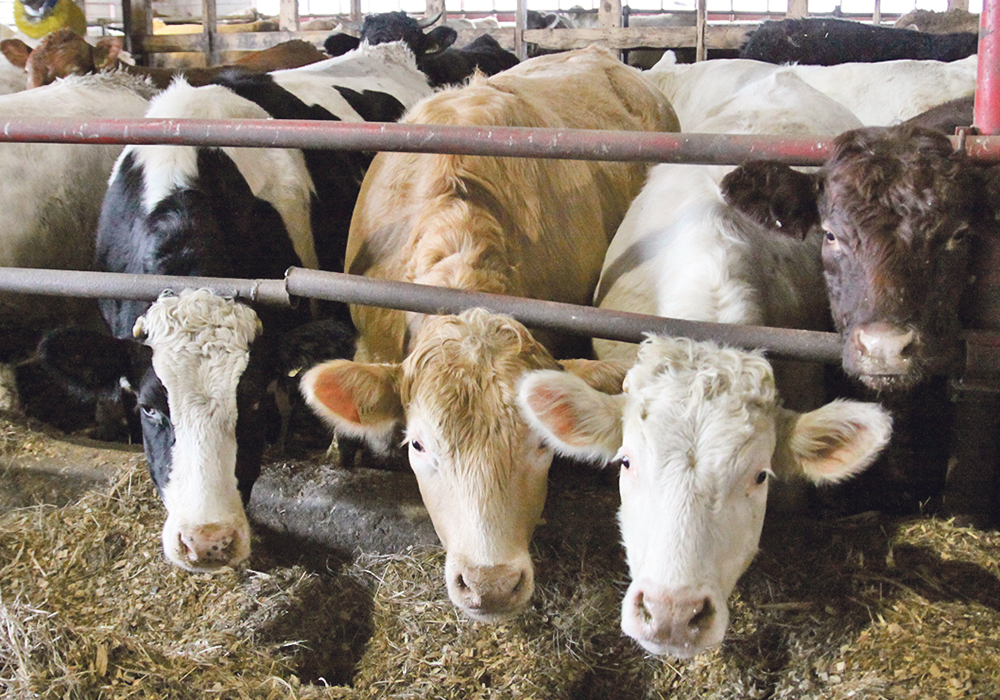RED DEER — Large meat supplies, plunging profits and uncertainty about the spread of the COVID-19 virus are affecting livestock markets.
The United States is working through record levels of beef, pork and poultry resulting in lower prices for producers.
There was a four to five percent increase in U.S. pork supplies year over year and that has a domino effect.
“They ramped up on their production with the expectation of sending it all to China and that is not coming into fruition with trade wars and (COVID-19),” said senior Canfax analyst Brian Perillat.
Read Also

Critical growing season is ahead for soybeans
What the weather turns out to be in the United States is going to have a significant impact on Canadian producers’ prices
Pork prices are level with a year ago, the lowest point in 10 years. Little improvement is expected this year.
“It is hard to get too much lift on beef prices when pork prices are in decline,” he said at the Alberta Beef Industry Conference held in Red Deer March 4-6.
There is plenty of beef, pork and poultry in North America and consumers are eating record amounts but prices are flat.
“The more we have to consume, the tougher it is to get much lift on our prices,” he said.
Strong Canadian exports have exhibited phenomenal growth in beef exports since joining the CPTPP, a trade agreement with Asian Pacific nations. Last year, volumes increased 10 percent but the greater gain was a 17 percent increase in value, Perillat said.
Selling more at higher prices has added $1 billion in export values in four years.
Live cattle fortunes have been variable.
Calf prices have been flat for the last three years ranging from $210 to $230 per hundredweight.
The fed cattle sector has taken a serious hit with continuing per head losses.
There was some profitability in early January but conditions have worsened.
“We probably lost $200 off our fat market in the last month or two. We are back in the red ink. These cattle are probably $10 a hundredweight offside,” he said.
Some have been sold on a contract that may provide some support for the dismal fed market.
Cow prices are strong due to higher trim prices.
The cow-calf sector is still profitable but returns are dipping.
A shrinking cowherd plagues Canada.
The most recent national census reported inventory levels are at their lowest since 1990. There are 3.56 million cows, down 2.6 percent from last year. Most of the decline occurred in the West where drought forced a big selloff of breeding stock. There are 7.5 percent fewer breeding heifers available in the West.
“There will be smaller calf crop and there will be no growth this year. There are not enough heifers around to do it,” Perillat said.
To fill the gaps, Canada has become a net import of feeder cattle.
At one time, Canada used to export 1.4 million of all classes of cattle to the U.S. but now they are staying home and more imports are coming in. Many are dairy calves.
“They were worth next to nothing down in the States with some of the changes there so we are bringing in a lot of dairy calves,” he said.
Western Canadian cattle slaughter is up five percent in 2019 due to this addition of imports. Jan. 1 cattle-on-feed numbers for Alberta and Saskatchewan are among some of the highest in 20 years even with the shrinking cowherd.
A strong basis has also been helpful.
Alberta fed steer basis cash to cash has been strong for about four years but last year there were weak periods. Canada needed the cattle to fill feedlots and keep plants running so the market was stronger.


















